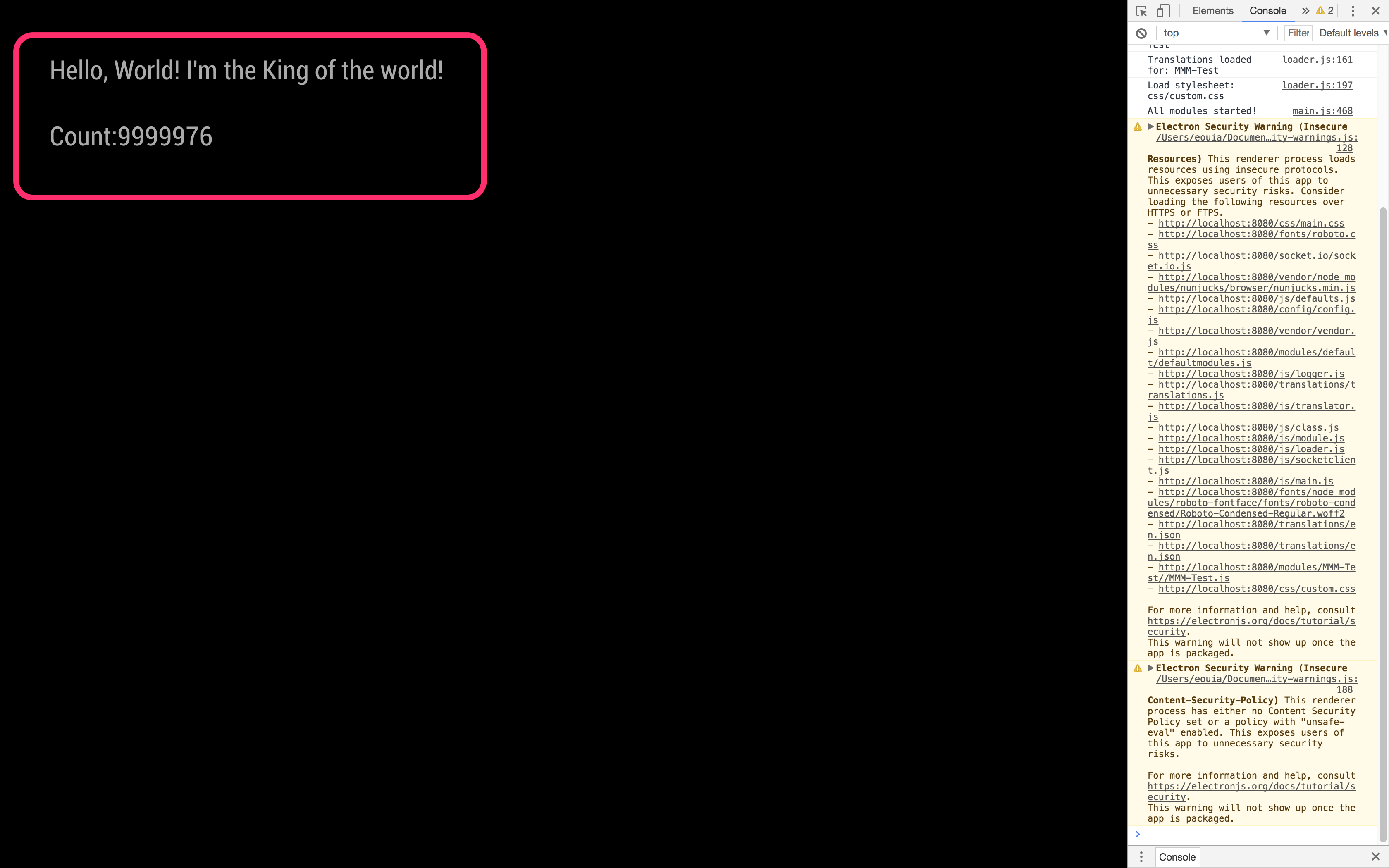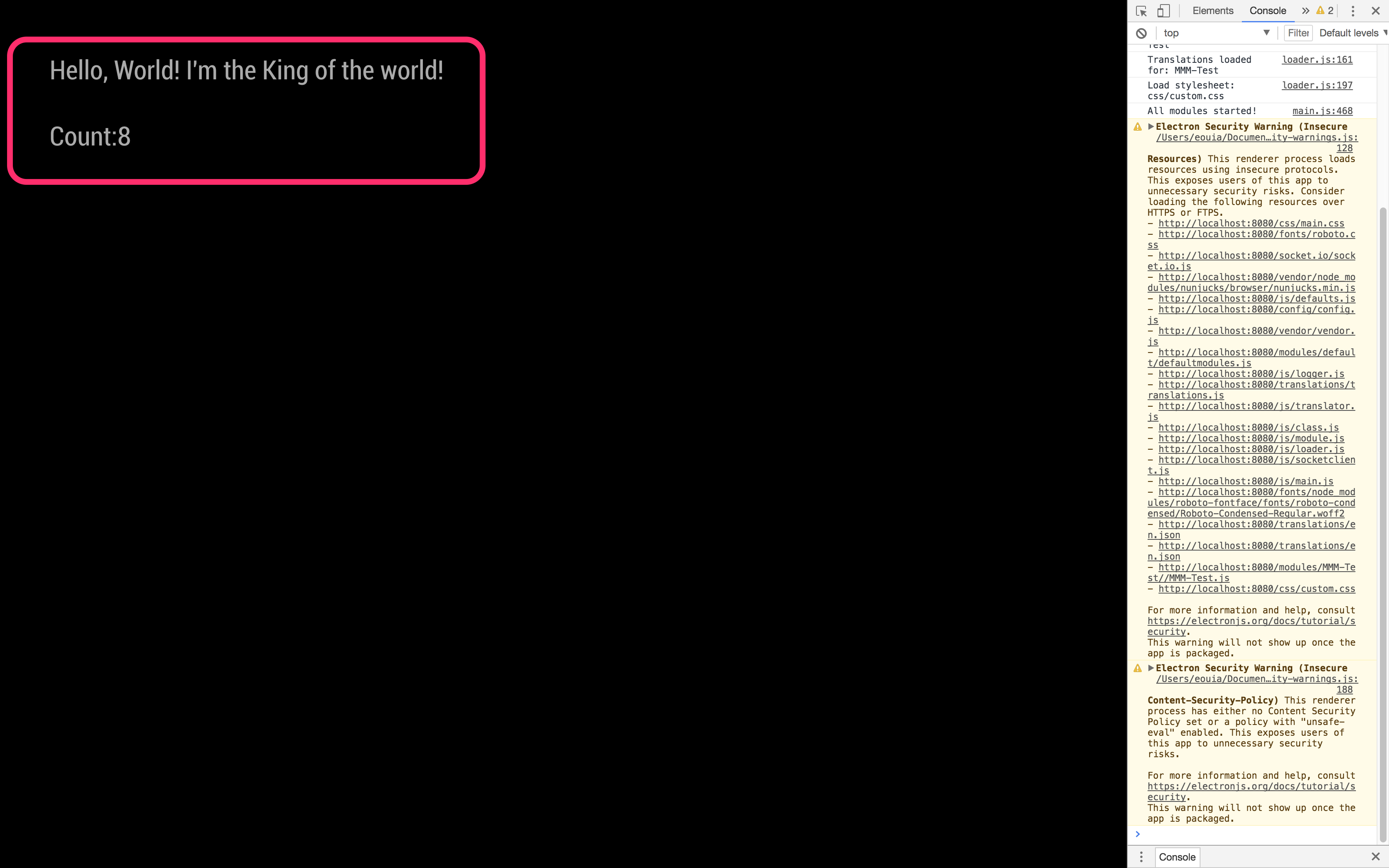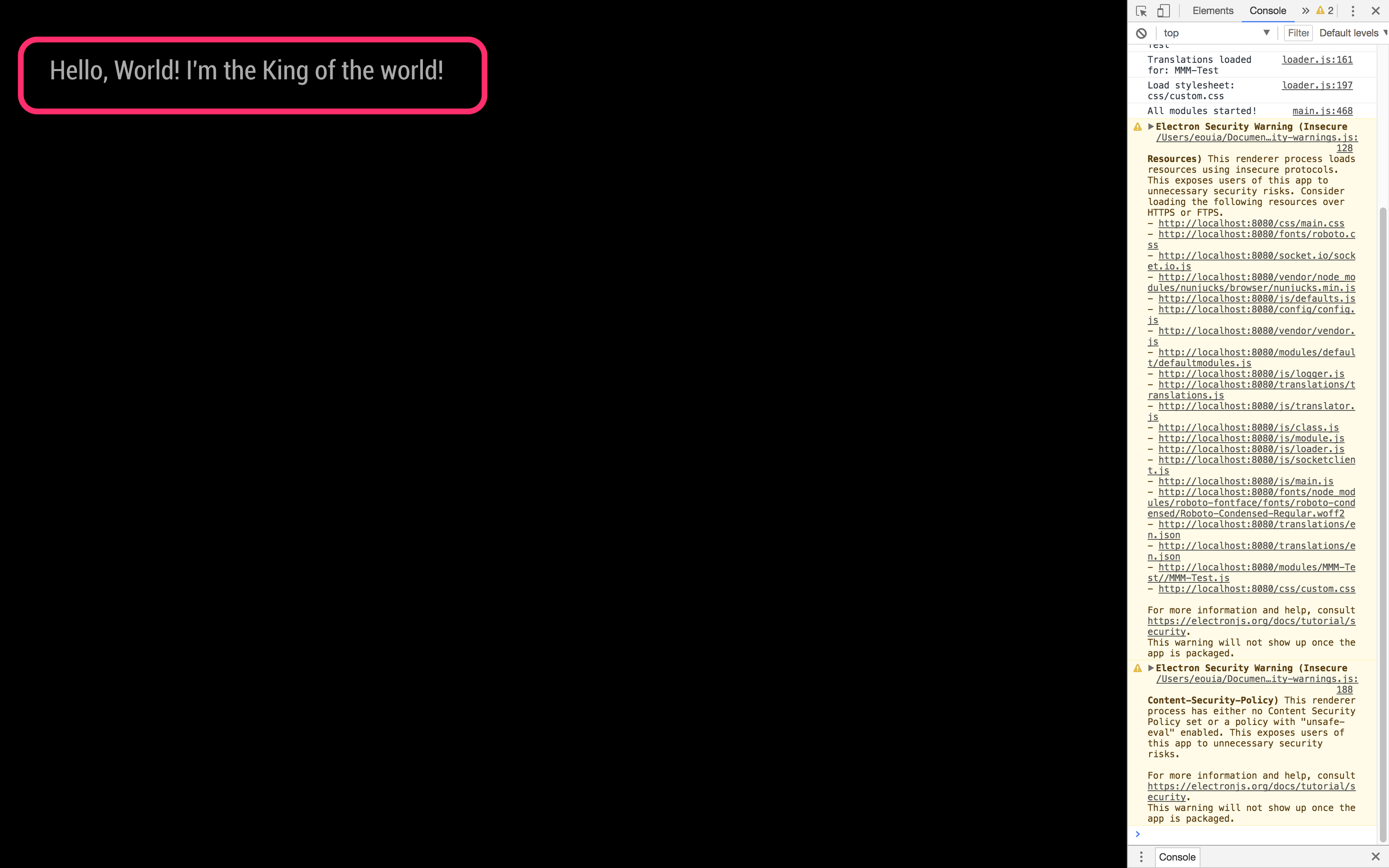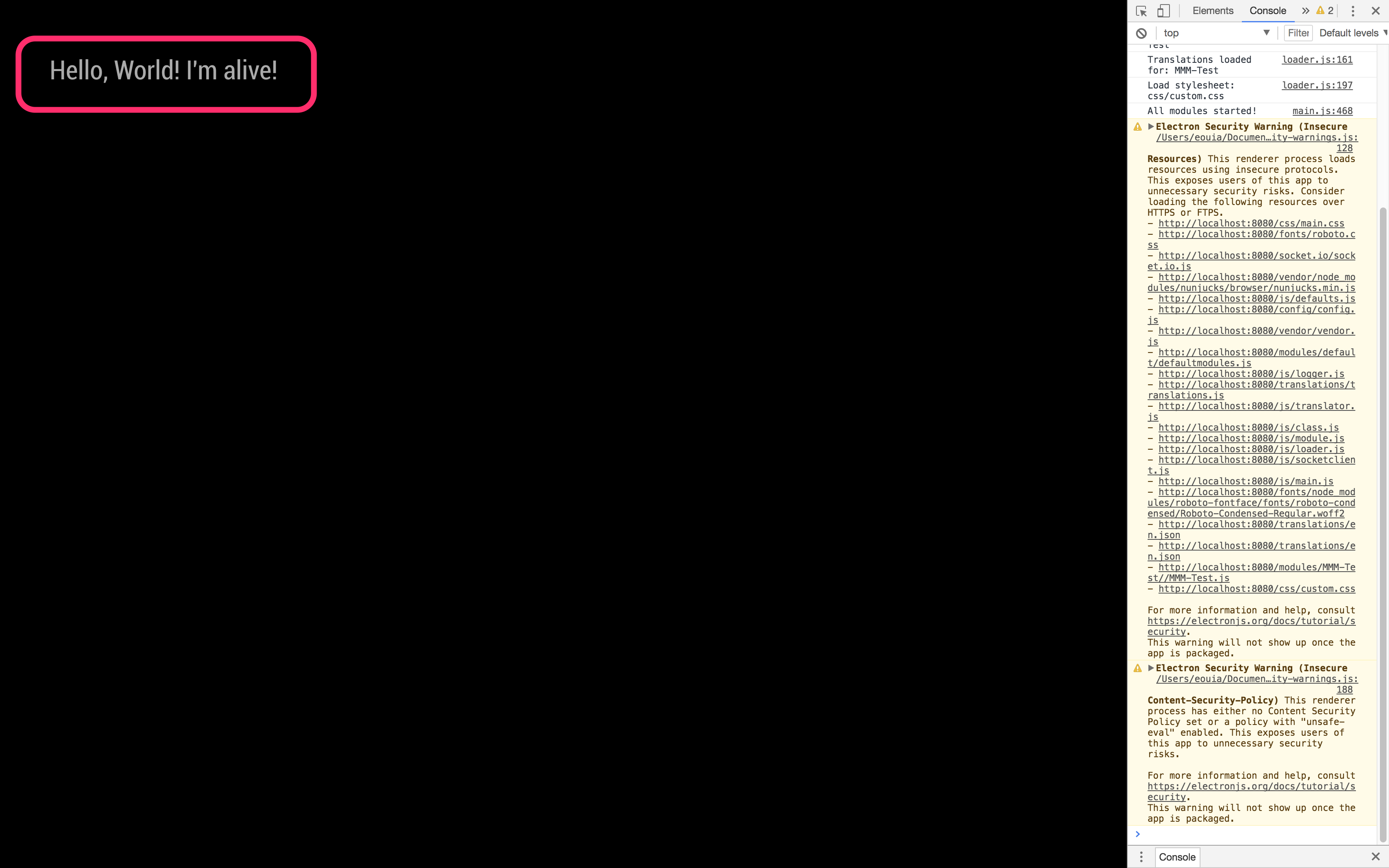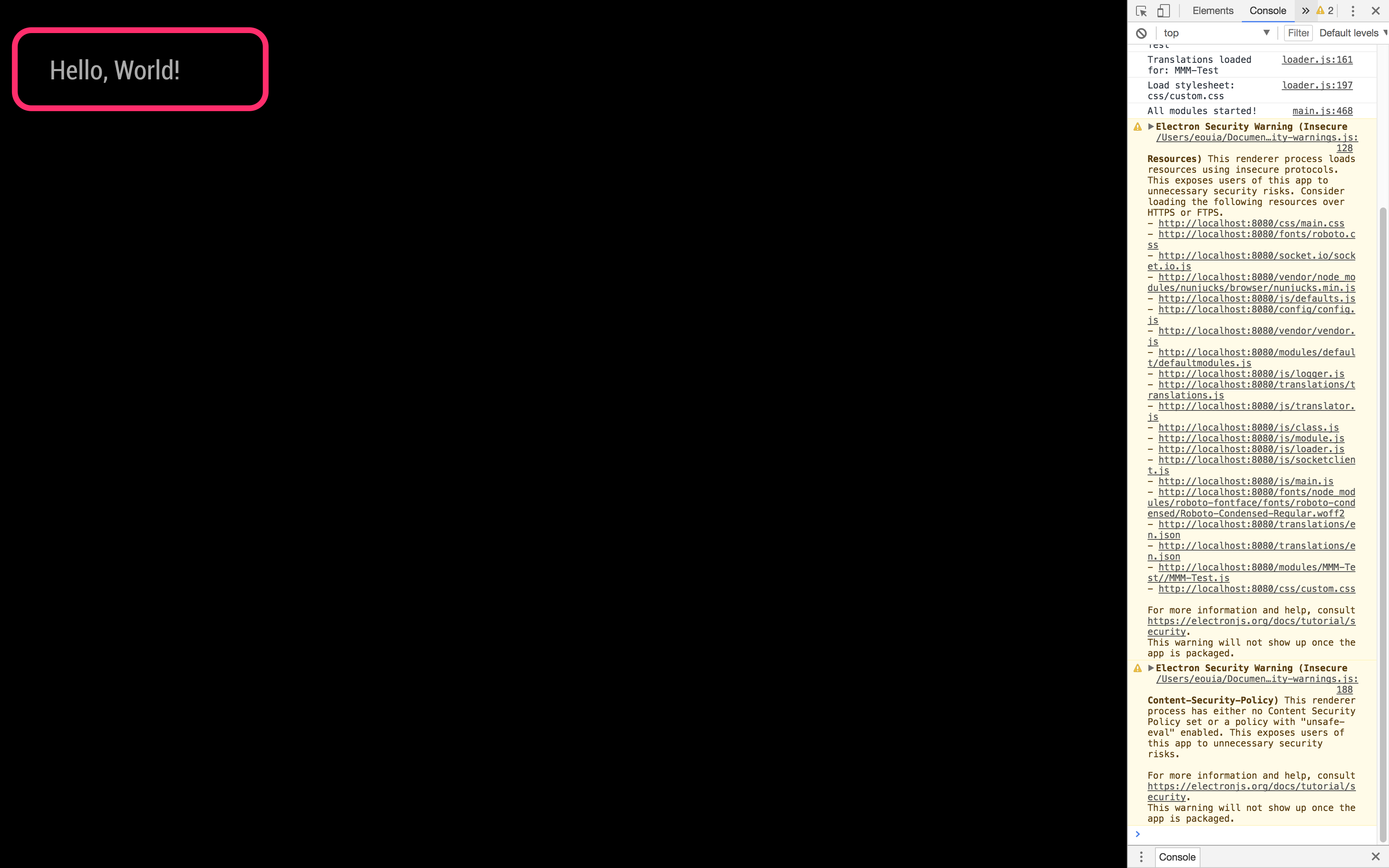Read the statement by Michael Teeuw here.
Head first developing MM module for extreme beginners
-
It is because there is an error (at least I think so - I am new too) and no instructions on where to put the function.
-
change the Module.register(“MMM-Timetable”) to Module.register(“MMM-Test”)
-
The article does not tell you where to put the getDom function when it is first introduced. Replace the getDom: function() {}. with the code shown. In other words, don’t just add it to the file. This article would have benefited from a final section that gave the entire code.
I think the original author at least expected us to be very familiar with Node.js (fair enough), but alas, I am not so it took a bit of work to figure it out. :-)
Here it is, for the first part:
Module.register(“MMM-Test”, {
defaults: {},
start: function () {},getDom: function() {
var element = document.createElement(“div”)
element.className = “myContent”
element.innerHTML = “Hello, World!”
return element
},
notificationReceived: function() {},
socketNotificationReceived: function() {},
})
_ -
-
Shame, code is really messed up. Not helpful to use it as a guide to start developing modules.
-
@nrayever see my sample module,
https://github.com/sdetweil/SampleModuleand follow the module developers doc
-
@sdetweil will try it. I don’t have JS experience that is why I have found it difficult to start.
-
@nrayever sorry cant help develop module if u dont know programming and dont want to learn
-
@StuGrunt said in Head first developing MM module for extreme beginners:
It is because there is an error (at least I think so - I am new too) and no instructions on where to put the function.
-
change the Module.register(“MMM-Timetable”) to Module.register(“MMM-Test”)
-
The article does not tell you where to put the getDom function when it is first introduced. Replace the getDom: function() {}. with the code shown. In other words, don’t just add it to the file. This article would have benefited from a final section that gave the entire code.
I think the original author at least expected us to be very familiar with Node.js (fair enough), but alas, I am not so it took a bit of work to figure it out. :-)
Here it is, for the first part:
Module.register(“MMM-Test”, {
defaults: {},
start: function () {},getDom: function() {
var element = document.createElement(“div”)
element.className = “myContent”
element.innerHTML = “Hello, World!”
return element
},
notificationReceived: function() {},
socketNotificationReceived: function() {},
})
_Both of those functions go outside the getDom function pretty much anywhere you want to put them.
The socketNotificationReceived function [example below, can be used in either node_helper OR your main.js file. The example below is in my node_helper] :
socketNotificationReceived: function(notification, payload) { if (notification === 'CONFIG') { this.config = payload; } if (notification === 'GET_CURRENT') { this.getCurrent(payload); } if (notification === 'GET_FORECAST') { if (this.forecast.timestamp === this.getDate() && this.forecast.data !== null) { this.sendSocketNotification('FORECAST_RESULT', this.forecast.data); console.log("Using data we already have"); } else { this.getForecast(); console.log("Getting new data"); } } }Here is the corresponding one in the main.js
socketNotificationReceived: function(notification, payload) { if (notification === "CURRENT_RESULT") { this.processCurrent(payload); } if (notification === "FORECAST_RESULT") { this.processForecasts(payload); } this.updateDom(this.config.initialLoadDelay); },You can use notificationReceived to receive info from other modules like this:
Here are examples of that:
notificationReceived: function (notification, payload){ if (notification === 'CURRENT_RESULT') { this.processCurrent(payload); } },this.sendNotification('CURRENT_RESULT', payload);This is how I send and receive my ‘payload’ from one module to another.
The first example is getting my ‘CURRENT_RESULT’ [getting info for a Forecast module from the Current weather module] from the bottom example that is
sending out ‘CURRENT_RESULT’…The bottom example will ‘broadcast’ and in reality ANY module can get the data it’s sending out.
Hope this helps. It’s a really simple process.
-
-
How can I test the getDom() html output?
I don’t want to restart MM every time when I change something just to look if it worked. -
@Schmaniel ctrl-r to reload the screen
-
@sdetweil … ok.
-
Hey guys,
I’m quite new in developing an own module. I was able to change exiting modules on my magic mirror but now I wanted to create my own module, but I’m not able to get socket communication between my “main” module an the “helper-function”
I uploaded my module here:
https://github.com/Dobherrmann/MMM_Testmodul.git
my Module looks like this on my magic mirror:

maybe someone can find my mistake(s).BR
